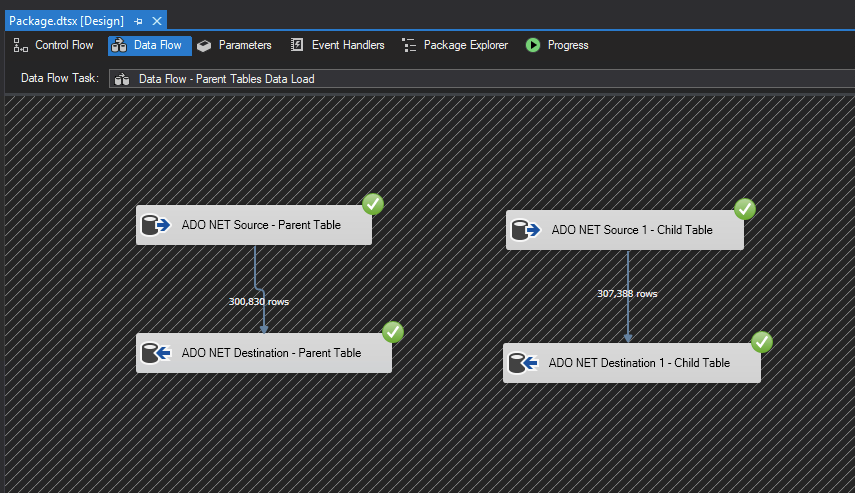AWS Database Blog
HP adds value to print customers through automated replenishment based on Amazon DocumentDB
This is a guest blog post by Mukesh Mishra, IT Architect at HP Inc. HP Inc’s vision is to create technology that makes life better for every customer and partner, and we strive hard to simplify the customer experience across product lines and services. HP offers a broad portfolio of printers across different customer segments, […]
How Panasonic Avionics used Amazon Aurora MySQL to modernize their environment
This is a guest post by Jeremy Welch, Data Software Engineer Sr. Staff on the Cloud, Data Management And Governance team with Panasonic Avionics Corporation, in partnership with AWS Sr. Database Solutions Architect Saikat Banerjee and Sr. Partner SA (Database) Venkatesh Periyathambi. Panasonic Avionics Corporation (PAC) is the world’s leading supplier of in-flight entertainment and […]
Migrate from SQL Server to Aurora PostgreSQL using SSIS and Babelfish
July 2023: This post was reviewed for accuracy. Babelfish for Aurora PostgreSQL understands T-SQL, Microsoft SQL Server’s proprietary SQL dialect, and supports the same communications protocol, so your applications that were originally written for SQL Server can now work with Amazon Aurora PostgreSQL-Compatible Edition with fewer code changes. With Babelfish, you still have to migrate […]
Achieve better performance on Amazon DocumentDB with AWS Graviton2 instances
Amazon DocumentDB (with MongoDB compatibility) is a scalable, highly durable, and fully managed database service for operating mission-critical MongoDB workloads. We recently announced support for AWS Graviton2 instances for Amazon DocumentDB. AWS Graviton2 processors are custom built by AWS using 64-bit Arm Neoverse cores and feature always-on, fully encrypted DDR4 memory and 50% faster per-core […]
Model-driven graphs using OWL in Amazon Neptune
Amazon Neptune is a graph database service provided by AWS that you can use to build a knowledge graph of relationships among business objects. When building a knowledge graph, what is a suitable model to govern the representation of those relationships? We would prefer not to build our graph on the fly, but rather have […]
Store and analyze time-series data with multi-measure records, magnetic storage writes, and scheduled queries in Amazon Timestream
Time series is one of the most common data formats, particular when collecting information from applications, infrastructure, and IoT devices. Amazon Timestream is a serverless time series database that scales with your data and makes it easy to store and analyze your events at a much lower cost than relational databases. During AWS re:Invent 2021, […]
Consolidate data from identical SQL Server databases into a single Amazon RDS for SQL Server database using AWS DMS
Organizations often choose from commonly used migration strategies for their on-premises to cloud migration. The choice depends on various factors, including target state goals and business outcomes (for more information, see Your cloud transformation journey). In this post, we discuss a re-platforming strategy where you consolidate data from multiple on-premises SQL Server database servers to […]
Explore the semantic knowledge graphs without SPARQL using Amazon Neptune with Rhizomer
This is a guest post written by Roberto García, Associate Professor and Deputy Vice-rector for Research & Transfer at Universitat de Lleida, Spain. In this post, we illustrate how to use the Rhizomer web application to interact with knowledge graphs available as semantic data from an Amazon Neptune instance through its SPARQL endpoint. Neptune is […]
Automate Amazon RDS backups using the Oracle RMAN utility and upload backup files to Amazon S3
Amazon Relational Database Service (Amazon RDS) for Oracle creates automated snapshots and allows creation of user-initiated manual snapshots in a Region. In addition, Amazon RDS for Oracle supports Oracle native backup tools like Oracle Recovery Manager (RMAN) and Oracle Data Pump. Many organizations spend considerable time and resources to manage and maintain database backups to […]
Implementing table partitioning in Oracle Standard Edition: Part 2
Organizations are adopting the cloud as a standard and actively evaluating their database needs. Amazon Relational Database Service (Amazon RDS) for Oracle is a managed service that makes it easy to quickly create Oracle database instances, enabling you to migrate existing on-premises workloads to the cloud. Migration from on-premises Oracle Database to Amazon RDS for […]









